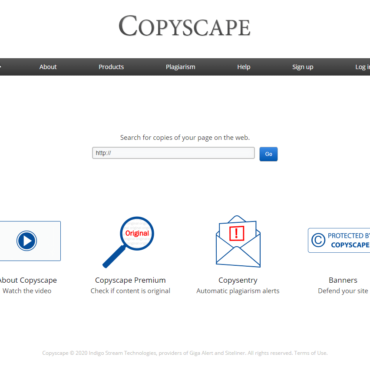You may have heard the term “click path” before, and you may know a thing or two about it, but if you want to make headway as an inbound marketer, it’s salient that you learn how to show clear click path. The definition may be simple, but the process itself requires you to spare no effort.
Why should you care a hoot about click paths? Because your goal as an inbound marketer is to convert qualified website visitors into leads, and by showing clear conversion paths, you amplify your chances of reaching your goal. Continue reading to learn more about conversion paths.
Overview of Conversion Paths
A conversion path, also known as click path, is a series of actions that an anonymous site visitor completes in order to become a verified lead. The primary components of a conversion path are a content offer, CTA, landing page, and thank you page. Are you able to see the big picture?
Here’s how these components come into play:
- An anonymous website visitor sees a content offer that they find winsome
- The visitor clicks on the CTA button in order to check out the content offer
- The visitor is redirected to the landing page after clicking the CTA button
- The visitor submits their information on a form in order to access the offer
- The visitor is redirected to the thank you page where the offer is received
As you can see, conversion paths are pretty much the essence of acquiring leads, which is why you should dedicate a considerable amount of time and effort to learning how to construct clear click paths. This is especially important if you’re involved in shopping cart optimization.
Conversion Paths & Search Engines
As an inbound marketer, it’s important for you to know the relationship between click paths and search engines. Simply put, search engines view the length of a click path as an indicator of its relevance. To be more specific, the length of a click path can affect the relevance of a website.
Generally speaking, the longer a conversion path, the more information it provides. This doesn’t mean that you should aspire to expand the layers of your conversion path to no end, as that can be extremely inconvenient. Typically, the depth of a web page shouldn’t exceed four layers.
If you examine the four components of a typical click path that we’ve gone over in the preceding section, you’ll notice that the overall number of clicks needed to complete the click path equates to four, which supports the necessity of a page’s depth to not go beyond four layers.
There are many ways you can go about showing clear click paths without having to resort to too many layers, one of which includes the implementation of product search filters, which is evident with online stores. Learn more about the ideal number of clicks that lead to conversions here.
Conversion Paths & Event Tracking
You may think that the steps of completing a click path consist of separate URLs, but in actuality, some of these steps can be completed on the same page. For instance, if you’re checking out a unit on an online store, clicks can reveal more information about the product on the same page.
The process of creating click paths for individual clicks independently from a web page is called event tracking. Things such as flash elements, gadgets, downloads, mobile ad clicks, and video plays are all prime examples of actions that are considered events.
Creating Effective Click Paths
Now that you have a solid overview of what a conversion path is and the impact it can have, it’s time to discuss a few best practices that you can use to ensure an effective and clear click path.
Get to Know Your Customers
The more information you know about your customers, the higher your chances of getting more lead conversions. This means that before you even begin to design click paths for your website, you have to accumulate as much information about your customers as possible.
The first step that you need to take on your quest for knowledge is to create a list of every piece of content on your website. Thereafter, you need to figure out which stage of the buyer’s journey a user is likely to be in when they land on any of the items that are on the list you’ve compiled.
In addition to creating appropriate buyer personas for your content, you must keep your current customers in mind. You want to examine the steps they take to fulfill your existing click paths so that you can pinpoint any hidden snags that could use some enhancements.
The final step in the process of getting to know your customers is to analyze your site’s usage in order to know exactly how visitors use your site and what they’re clicking on. To do this properly, you’ll have to invest in heat-mapping software such as Hotjat, Smartlook, or Crazy Egg.
Address Customer Concerns
By implementing the few aspects of the previous step, you should now have a fairly solid idea of who your prospective customers are as well as your current customers. In this step, you want to put the information you’ve gathered to use in order to address the challenges your users face.
Addressing customer challenges is all about providing content that resonates with the customer personas that you’ve created for each stage of the buyer’s journey, which consists of three main stages: the awareness stage, the consideration stage, and the decision stage.
Here’s how you can do that:
- For the awareness stage, you want to create broader content that’s not geared towards branding. This stage is all about being informative and helpful, so your content needs to carry a how-to approach to it instead of a salesy, promotional approach.
- For the consideration stage, you want to make sure that you address a particular need or concern with your content. With that in mind, you should opt for the promotional route where you point out how your product can help customers with their concerns.
- For the decision stage, your content should be heavily-geared towards branding since users in this stage have already done their homework and are ready to buy. This is the stage where you showcase why your product is the best in the industry.
Employ Clear Calls-to-Action
Now that you’ve created the right type of content for each of your customer personas, your next step should be to provide your visitors with ways to access your landing page. The way you can do that is by employing clear CTAs that persuade customers to check out your content offer.
CTAs are the starting point of a conversion path, which puts a huge emphasis on how functional these buttons need to be. For you to create winsome calls-to-action, you need to make sure that the message displayed on these buttons resonates with that of the content on the landing page.
Creating excellent CTAs is all about using actionable language that’s worthy of clicks. Moreover, CTA buttons need to stand out from the rest of your site’s layout, so you may need to use colors that jut out.
Finalize the Conversion Path
The way you finalize your conversion path in order to gain a lead is by optimizing your thank you page. While calls-to-action are the starting point of the conversion path, thank you pages are the ending point of the conversion path, so make sure everything ends on a high note.
You can use your thank you pages as a means of transferring your site visitors from one buyer’s journey stage to another. The way to do that is to use complementary CTAs that tie into the offer, which has granted you the lead. This helps ensure a much greater rate of conversions.
Final Thoughts
Without a clear click path, your chances of landing a qualified lead become slim, so you need to make sure that your click paths are carefully thought out. Hopefully, this article has provided you with the insight you need to begin implementing clear conversion paths for your website.








